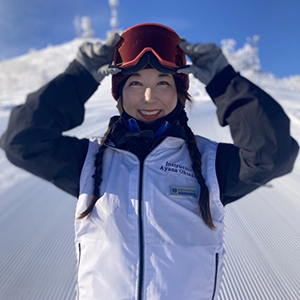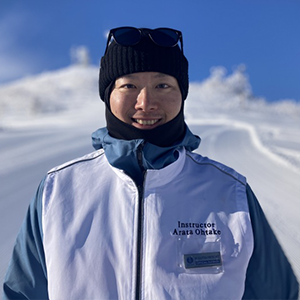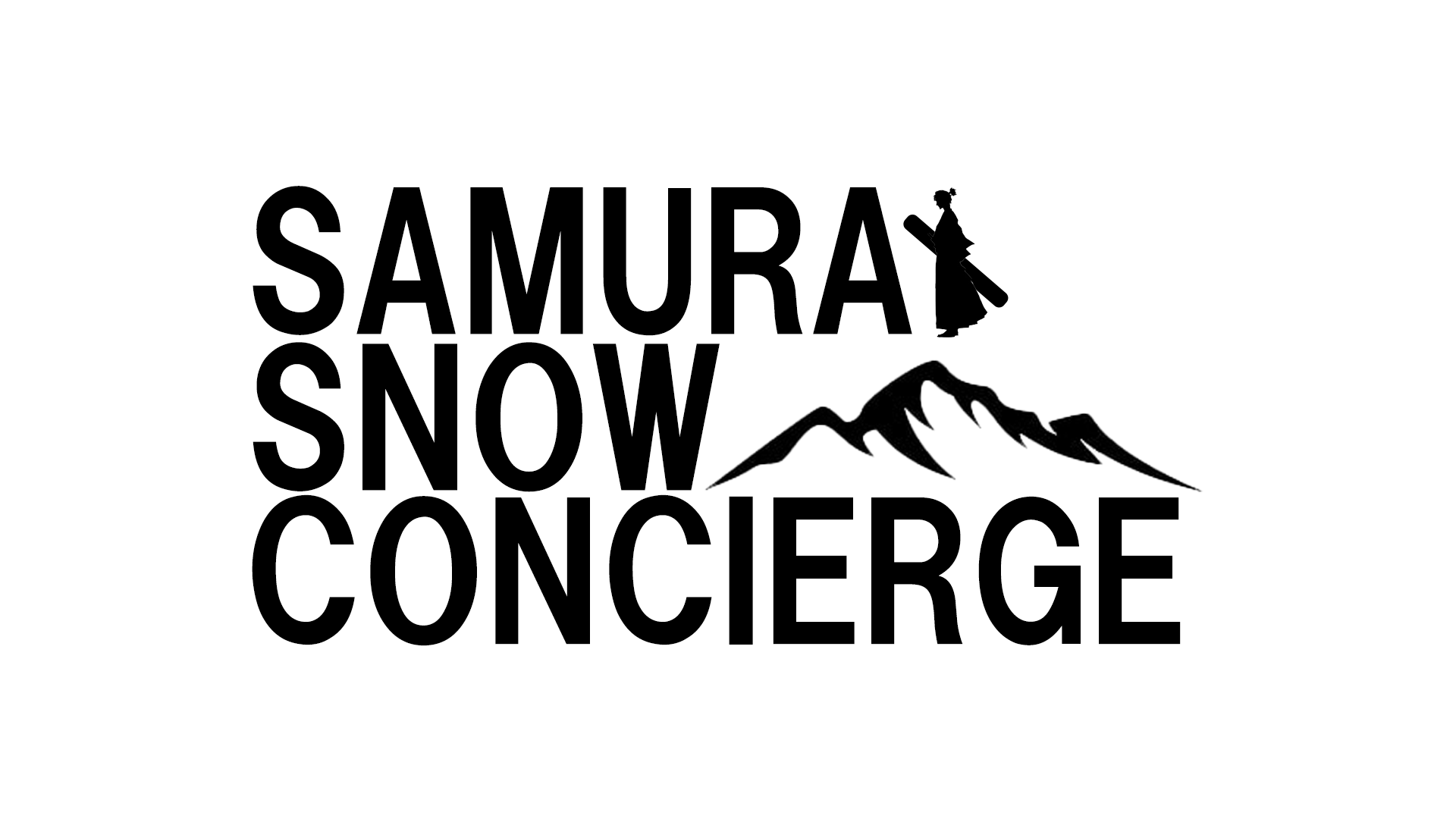As you get more comfortable on the slopes, you’ll probably start wanting to invest in your own snowboard gear.
Among all the gear, choosing the right boots is especially important. If your boots don’t fit your feet properly, your strength won’t transfer effectively to the board, making it difficult to control.
As a result,
it becomes harder to practice turns,
your progress slows down, and
in the worst cases, you could even injure your feet.
That’s why picking the right snowboard boots is absolutely essential for progressing safely and having fun on the mountain.
To sum it up briefly, the best boots for beginners are lightweight, soft, and easy to put on.
But of course, just knowing that doesn’t make it easy to choose the right pair!
So in this article, as certified A-level instructors, we’ll explain in detail the key points to consider when choosing snowboard boots, as well as what to check when trying them on. We’ll also introduce some of the best beginner-friendly boot brands and models, so you can find the perfect pair for your first season.
3 Types of Snowboard Boots Beginners Should Know
Snowboard boots are generally divided into three types depending on how they’re tightened. Which one suits you best depends on your personal preference, but as a beginner, it’s smart to prioritize ease and simplicity when tightening your boots.
Lace Type
This is the classic, traditional style of boot that uses regular laces—just like sneakers.
Advantages: Simple design, adjustable tightness, and can offer a snug fit if laced properly.
Disadvantages: Takes time to put on and take off, requires strength to tighten properly, and can be difficult for women or kids to handle.
BOA Type
This type tightens with a dial system that winds a steel wire around the boot, making tightening super easy. These days, this is probably the most common system—you’ll even find it on most rental boots.
Advantages: Extremely easy—just turn the dial! No strength required, so it’s great for women and kids. To loosen, simply pull the dial, so taking them off is effortless too.
Disadvantages: You can’t fine-tune the tightness in specific areas (for example, just around the ankle). They’re also more prone to breaking than lace boots, and frequent use may cause the wire to rub and wear through the upper material.
Quick Lace Type
This type tightens by pulling cords located on the sides of the boots. It combines the best of both worlds—the snug fit of lace boots and the ease of use of BOA systems.
Advantages: Provides a secure, tight fit by simply pulling the side cord. Easy to tighten and loosen—great for women too.
Disadvantages: If you pull in the wrong direction, the boots won’t tighten properly (though this is easy to learn when you try them in-store). Also, if the stopper isn’t secured well, they may loosen quickly.

For beginners, I recommend choosing boots that are simple and intuitive to put on and take off—BOA or Quick Lace types are great options!
Key Points When Choosing Snowboard Boots as a Beginner
Now, let’s go over what you should specifically look for when choosing your snowboard boots.
Flex (Boot Stiffness)
Boot stiffness is referred to as flex. The level of flex may vary slightly between brands, but generally, lower numbers mean softer boots. Most brands rate them on a scale from 1 to 5.
For beginners, soft boots (flex rating of 1 or 2) are highly recommended.
Soft boots are less tiring, reduce the risk of foot pain, and make it easier to control the board when practicing turns.
As you get faster and start carving turns confidently, you can move up to stiffer boots (around flex 5).
Ease of Putting On
You’ll only know this by actually trying them on in a shop. If it’s hard to get your foot into the boot, it’ll be tiring before you even start riding. Choose a pair you can slip into smoothly.
Fit and Comfort
Proper fit is crucial. When trying boots, make sure there isn’t too much space around your toes or the top of your foot.
If the boots are too tight, that’s also a problem—but too loose, and you’ll lose board control.
If there’s space at the toes, your foot won’t grip the edge well during turns, which can cause slipping or even blisters.
Check the following points to find your perfect fit:
Are your toes comfortable—not painful, but not too loose?
Is the top of your foot snug, without pressure or extra space?
Does your heel stay down without lifting?
Are the boots wide enough?
Do they feel natural when you walk?
Can you jump without discomfort?
If you can answer “yes” to these, the boots likely fit you well.
Lacing System Type
As mentioned earlier, there are three main systems. Personally, I recommend BOA or Quick Lace for beginners, but ultimately it depends on your preference. Try each in-store to see which feels easiest and most comfortable.

If you try tightening the boots and think, “This feels confusing or hard to do,” skip that model—it’s not for you.
Weight
Boots vary in weight, but for beginners, lightweight models are ideal.
They’re easier to carry, less tiring when walking, and won’t make your legs ache on the lift.
The downside is that lighter boots may be a bit less warm, but that’s not a big issue for beginners—you’ll probably be sweating from all the practice anyway!
Heavier boots provide better warmth and stronger board response, so they’re a good choice for intermediate and advanced riders.
Compatibility with Bindings
It’s important that your boots match your bindings. Not all boots fit perfectly into all bindings.
If the boots are too big for your bindings, your heel might not sit properly, or the straps might not reach—meaning you can’t even ride.
So always check that your boots and bindings fit together before buying.
Ease of Removing the Inner Boot
Snowboard boots have an inner liner for added comfort and fit.
After riding, it’s important to remove and dry this liner properly, so choose boots where the inner liner is easy to take out and put back in.
Don’t Always Trust the Salesperson’s Advice
When buying boots, you’ll likely get advice like:
“Stiffer boots will help you progress faster,” or
“Harder boots are more stable when riding.”
That’s partly true—but beginners who start with stiff boots often find them too painful to practice in, which can actually slow progress.
Yes, stiffer boots may help you improve once you’re experienced, but your goals matter.
If your aim is “to have fun and ride comfortably,” soft boots are best.
If you’re training to “enter competitions next season,” then stiffer boots might make sense.
Choose boots that match your motivation and purpose—not just what the salesperson recommends.
Recommended Boot Brands and Models for Beginners
Now that you understand how to choose boots, let’s look at some of the best brands and models for snowboard beginners.
SALOMON
Salomon is a French all-mountain brand that designs not only winter sports gear but also summer outdoor equipment.
The brand has its own unique lacing system that allows easy adjustment, making it perfect for riders who don’t like complicated setups but still want a firm, secure fit.
Salomon also offers many models designed specifically for Japanese foot shapes.
Salomon LAUNCH
This model is especially recommended for men.
It’s lightweight, medium-flex, and offers excellent fit and durability—all at a great price.
The standout feature of the LAUNCH is its independent ankle harness, which prevents heel lift.
While the outer laces adjust general tightness, the inner ankle strap provides solid heel hold—so you get that unique feeling of being both securely locked in yet comfortably loose at the same time.
Salomon FACTION
This model features a lightweight, soft flex design that provides great support for beginners’ feet.
Despite its ultra-thin and lightweight build, it has a highly durable outsole that keeps your feet well secured—a big advantage for long-term use.
Because it strikes the perfect balance between lightness and shock absorption, it offers excellent comfort and responsiveness.
If you’re looking for boots that will let you enjoy snowboarding for years to come, this is a great choice.
Salomon IVY
This is a women’s model with a stylish, pop-inspired design and an easy-entry construction—one of its most appealing features.
It’s specially designed for women, focusing on fit and heel hold. The stitching from the toe to the pinky area creates a smooth, irritation-free feel, providing excellent comfort.
This is the perfect option for women who want boots that are easy to put on but still hold the foot securely.
BURTON
Burton is one of the most recognized snowboard brands in the world, offering everything from boards and bindings to apparel and accessories.
Known for its top-tier quality and stylish designs, Burton is a favorite among riders who want to look good while performing well on the mountain.
While the brand produces many models for intermediate and advanced riders, there are also plenty of beginner-friendly options worth checking out.
Burton MOTO
Among Burton’s lineup, the MOTO is one of the best boots for beginners.
It’s extremely soft and easy to handle, making it ideal for those new to snowboarding. Its shape is neutral and fits comfortably on a wide range of feet.
It also has Burton’s signature excellent heel hold, and despite being a soft boot, the sole is firm enough to transfer power effectively to the board.
Another perk is that, being a major brand, Burton boots are easy to find online—available through Amazon, Rakuten, or even resale sites like Mercari.
Burton RULER
This model is especially recommended for men with wider feet.
It has a medium flex, offering a perfect balance between comfort and control. You’ll get reliable power transfer and solid cushioning, so you can ride longer without fatigue.
The RULER is also a popular choice among intermediate riders looking to master freestyle or ground tricks.
Burton Mint
The Mint is Burton’s entry-level women’s model, making it one of the most affordable options in the brand’s lineup.
It’s a very soft boot, easy for women to handle—ideal for those starting snowboarding or for riders who don’t want to spend too much but dislike using rental boots.
If you’re looking for an inexpensive, comfortable, and trustworthy first pair of boots, the Mint is a solid pick.
DEELUXE
Deeluxe is a specialized snowboard boot brand so popular that some riders swear by it, saying,
“I only wear Deeluxe boots.”
Its most notable feature is the Thermo Inner technology, which allows you to custom-mold the inner liner using a special oven to perfectly match your foot shape.
This ensures an outstanding fit and makes Deeluxe highly popular among riders of all styles.
Deeluxe ID
The ID is Deeluxe’s best-selling model.
It’s extremely soft, making it beginner-friendly, yet still delivers a surprisingly responsive feel to the board—so it’s also loved by freestyle and ground-trick riders.
Normally, soft boots don’t transmit power well to the board, but the ID features a Power Belt that lets you adjust the flex, giving you the best of both worlds.
With excellent ankle hold and adjustability, this model achieves the perfect balance—soft yet dependable.
Deeluxe ID LALA
For women, we recommend the ID LALA, based on the best-selling ID model.
It maintains the same lightness and softness of the original, while adding a system that lets you fine-tune overall tightness and ankle support depending on the situation.
It also has great shock absorption and a Thermo Block that boosts warmth—perfect for cold-weather riding.
Although it’s a bit pricey, it’s well worth it for women who are serious about snowboarding and want boots that offer both comfort and high performance.
Must-Have Items to Go with Your New Boots
Once you’ve got your own boots, there are a few extra items that can help you maximize comfort and extend boot life.
Moisture Absorbers
A must-have.
Even though snowboarding is a winter sport, your feet can sweat quite a bit inside the boots.
Leaving damp boots can cause mold and unpleasant odors, so always use moisture absorbers after riding.
For the best results, remove the inner liner before placing the absorber inside.
Boot Bag
A boot bag is another convenient accessory.
While boots don’t get very dirty on snow, they can pick up dirt when you walk into restaurants, restrooms, or parking areas.
Especially in spring, when the snow mixes with soil, it’s easy for mud to stick to the soles.
If you pack dirty boots directly into your snowboard bag, your board and clothes can get messy—so having a boot case is really practical.
Snowboard Socks
You can ride in regular socks, but I highly recommend using snowboard-specific socks.
They’re thicker, which helps prevent your feet from moving around inside the boots, and they provide extra cushioning and shock absorption.
When trying on boots, make sure to wear the same snowboard socks you plan to use while riding to get the most accurate fit.
Insoles
While not essential, custom insoles can significantly change the feel of your boots.
They can improve fit, reduce fatigue, absorb impacts, and even enhance warmth—all of which contribute to better control and comfort on the slopes.
How to Get Snowboard Boots Cheaply (Even as a Beginner)
Getting started in snowboarding can be expensive—boards, bindings, boots, goggles, helmets, and more.
So it’s no surprise that many people think:
“I already spent a lot on my board and bindings, so I’d rather not spend too much on boots!”
Boot prices vary widely, but for beginners, a budget of around ¥30,000–¥50,000 is perfectly reasonable.
(And there are ways to find good boots for even less.)
To keep costs low while still getting good gear, focus on cost performance.
Here are some ways to get boots more affordably:
Buy from online shops like Amazon or Rakuten.
Shop after the season ends when clearance sales start.
Look for previous-season models before the new ones come out.
Buy used boots from Mercari or secondhand shops.
If you don’t mind used gear, Mercari can be the cheapest option—some sellers list boots that have only been used once or twice. Finding those hidden gems can be a great deal.
The only drawback of online shopping is that you can’t try them on, so it’s best for people who already know exactly which model they want.
Conclusion
In this article, we’ve covered the key points for choosing snowboard boots and introduced several recommended beginner models.
Once you find boots that truly fit your feet, your riding will dramatically improve—you’ll feel more comfortable, confident, and in control.
Use this guide to help you find the perfect pair for your snowboarding journey!
We are Samurai Snow Concierge, a ski and snowboard school based in Rusutsu, Hokkaido, specializing in private lessons.
If you’re unsure which boots to buy, or you’re worried whether you can actually ride after purchasing your own pair, feel free to contact us.
As active A-level certified instructors, we’ll be happy to help you choose and ride with confidence.
We also look forward to seeing you on the slopes in one of our lessons!
















コメント